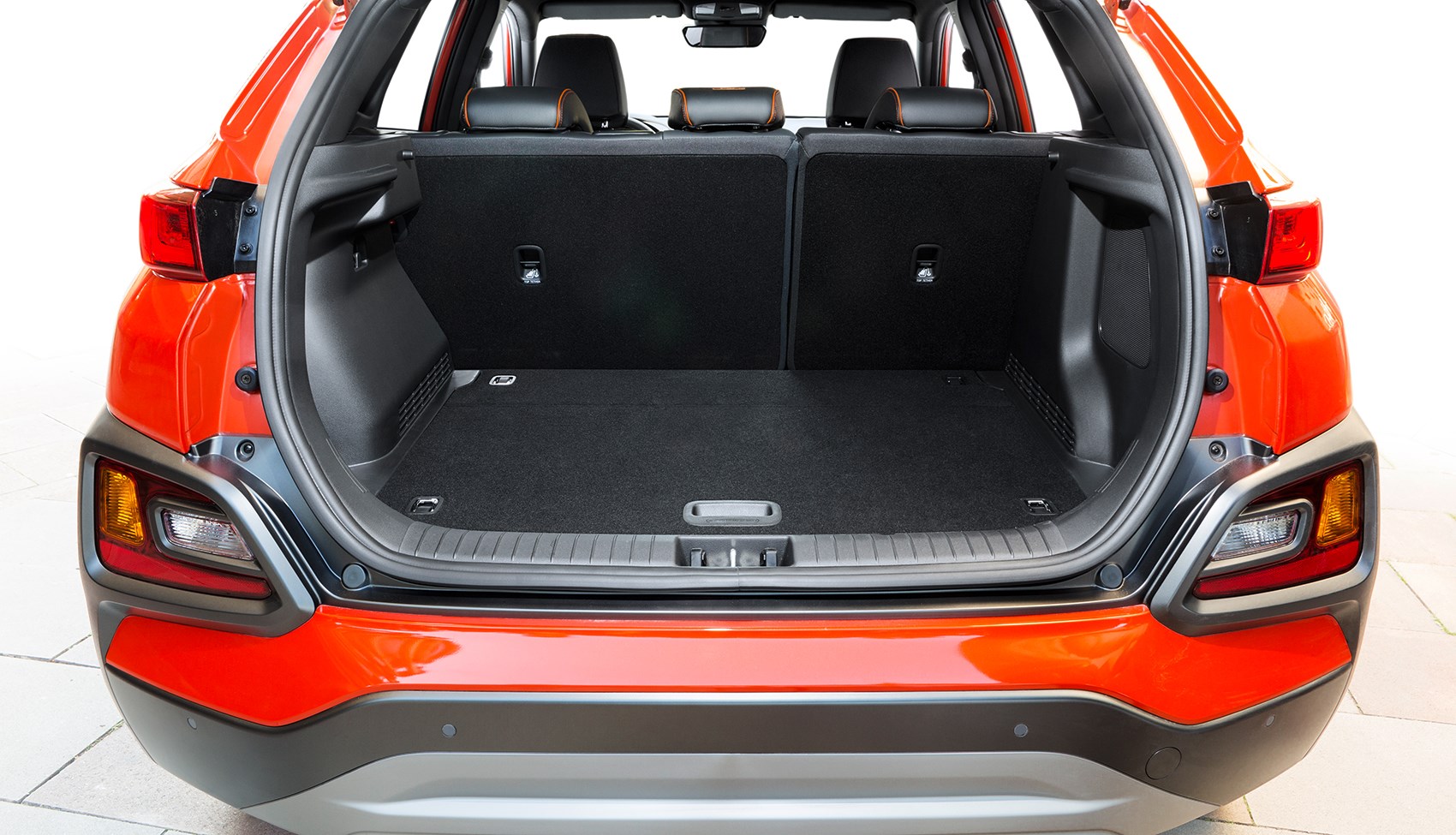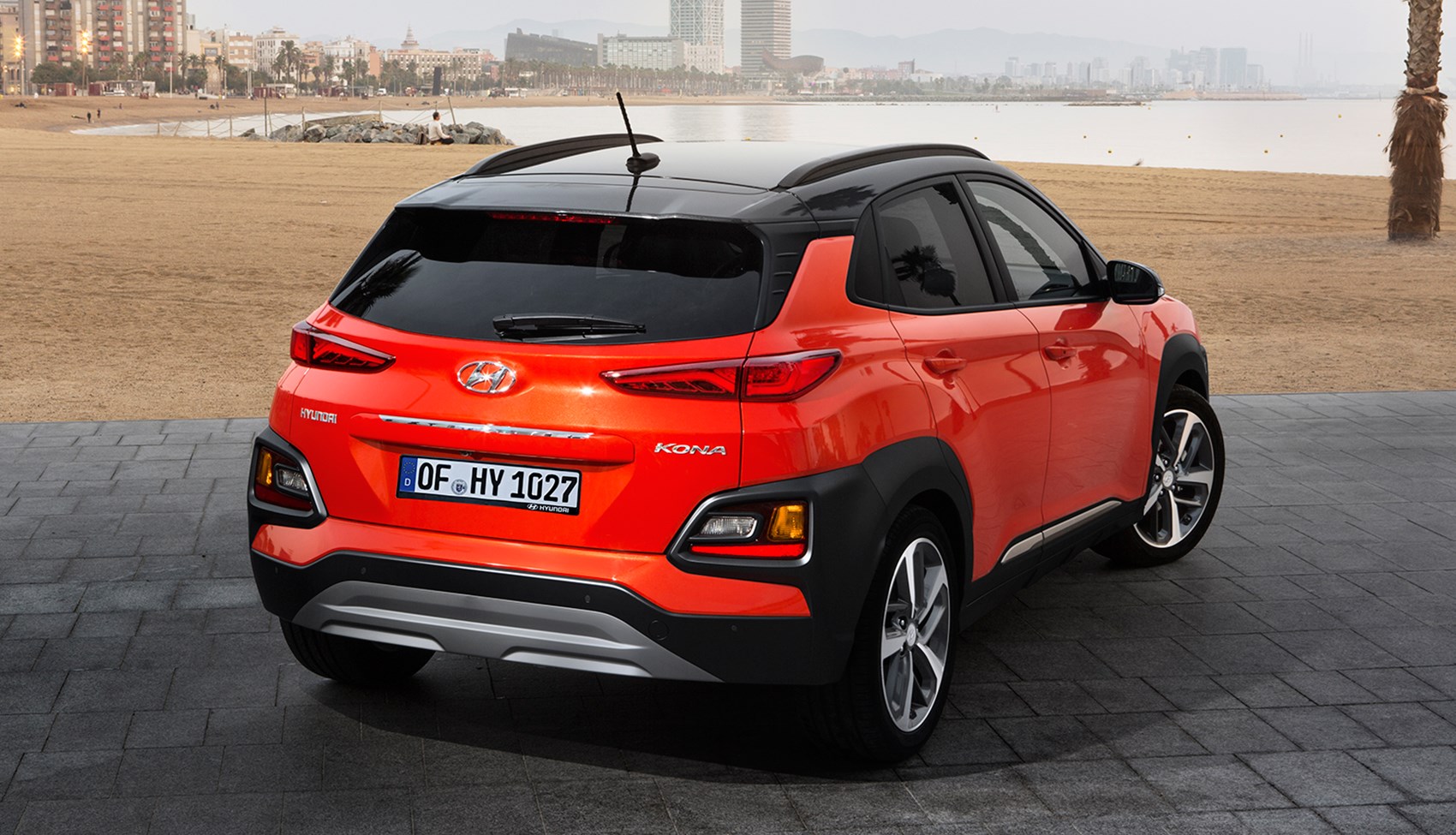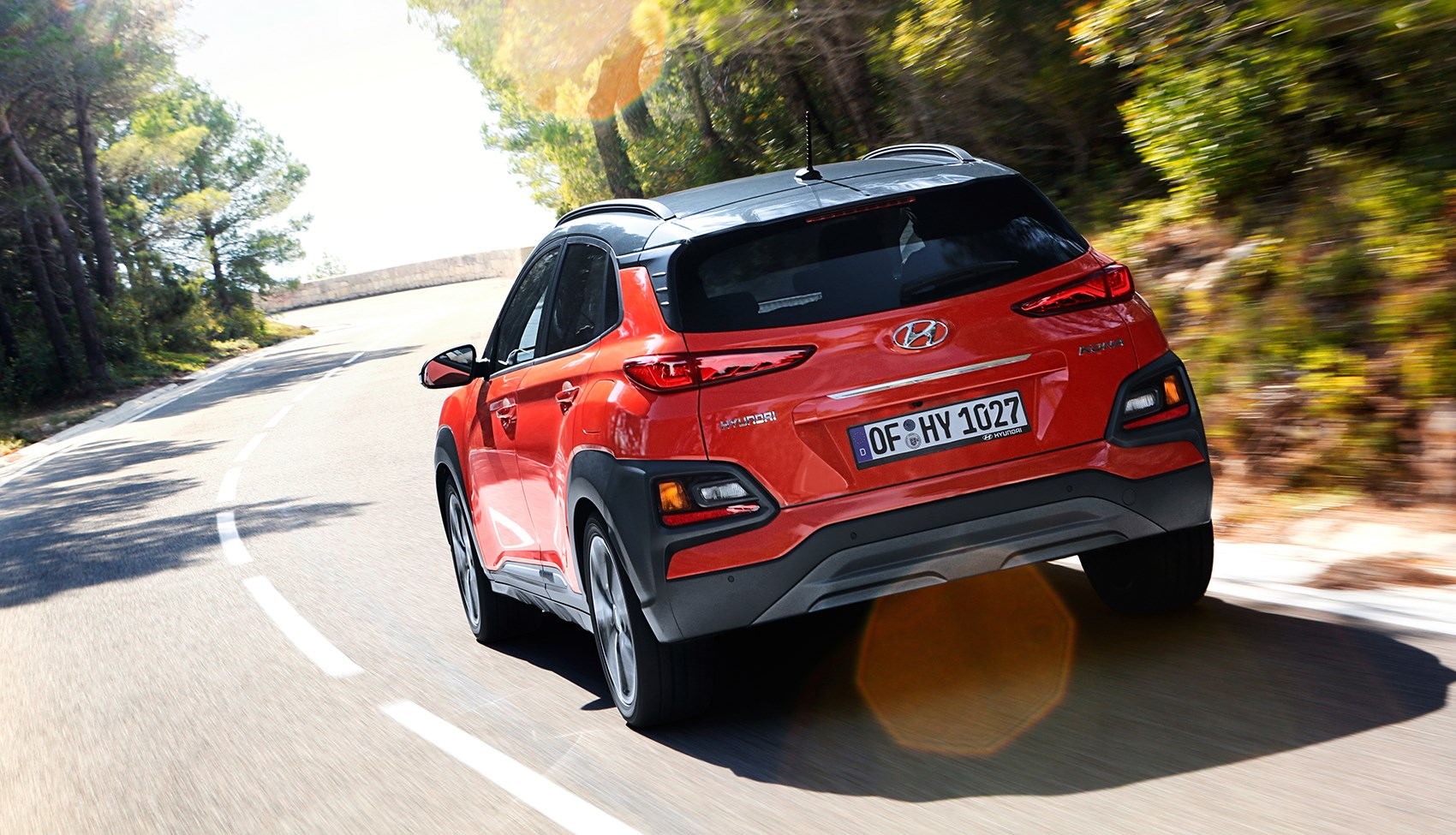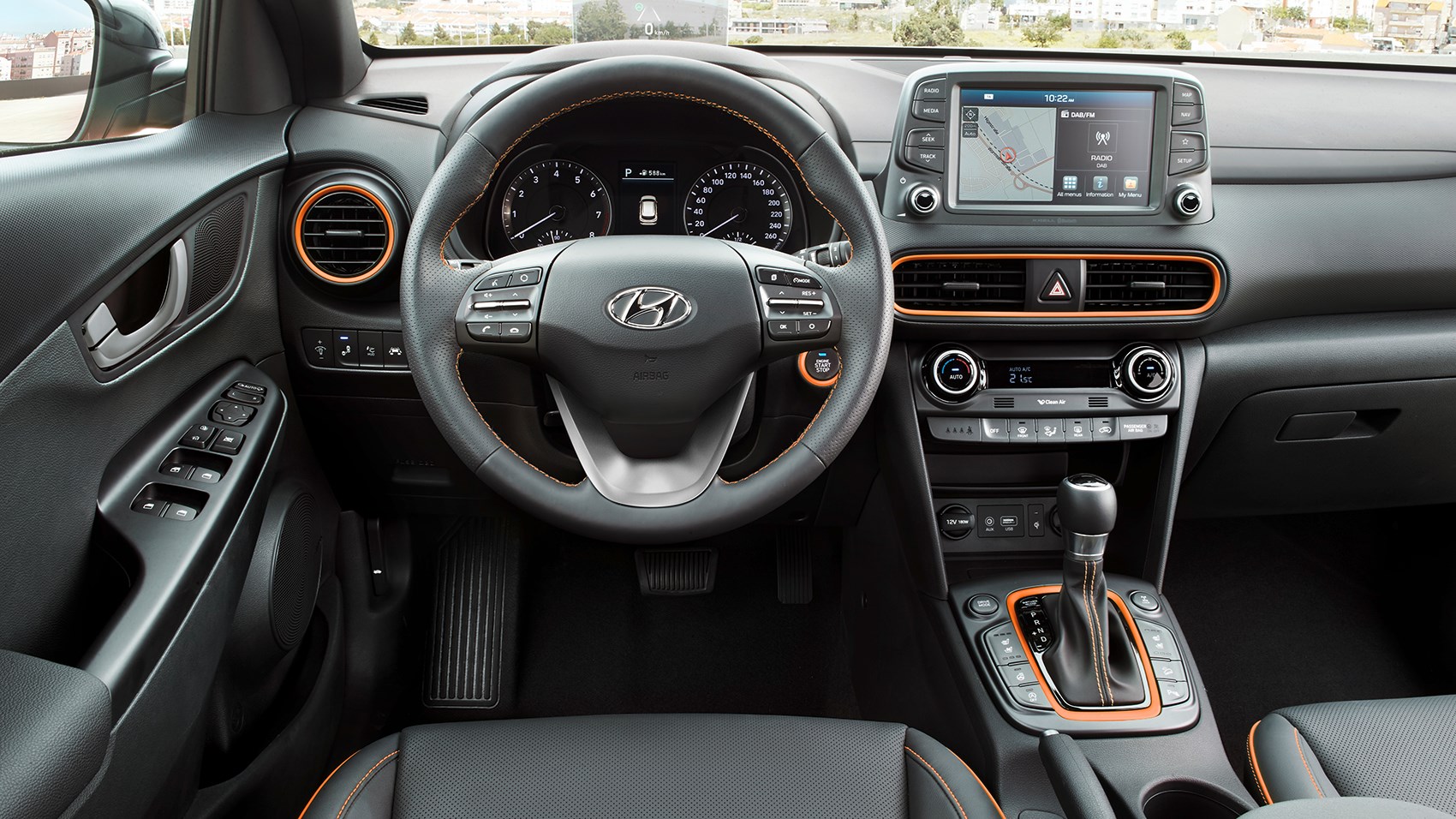► Hyundai Kona crossover road test review
► Turbocharged 1.6-litre petrol packs 175bhp
► Stuffed with standard kit, but at a high price
Slip £24,995 into the hands of a Hyundai salesman and you could have the new Golf GTI-rivalling i30 N – all 247bhp of it. Or you could have this, the fastest version of the Hyundai Kona, the latest shrunken SUV.
Branded as a ‘true SUV’ by its maker – with no small amount of poetic licence – the 175bhp turbocharged 1.6-litre Kona comes complete with all-wheel drive and dual-clutch auto transmission.
Despite being just 10cm longer than a Renault Clio and packing a healthy horsepower tally, it’s barely any faster than a BMW 118d. Blame the fact that it weighs practically the same as a four-wheel drive diesel Skoda Octavia Estate.
Engine makes a lot of noise but not much progress
You’d expect 175bhp to go a long way in a car this size, but its sheer weight makes the Kona sprightly rather than fast. What makes it feel slower, however, is the coarse engine that seems permanently unhappy, showing all the enthusiasm of a late-night UK-EU Brexit gathering.
Dawdle around and the engine’s fine, but work it harder and it feels like you’ve left the handbrake on; the 1.0-litre is much smoother and dishes its power out much more willingly.

Compounding things is the dim-witted dual-clutch gearbox that feels several generations behind the units plumbed into many similarly sized VW Group models. In traffic the throttle response can be hard to judge for smooth progress and if you want it to pick up the pace it can require hamfooted mashing of the throttle to get the car to respond.
Yes, you can take control of gearchanges for yourself, but if you’re paying £25k for an automatic, you’d expect it to do a good job by itself.
Tidy handling but 1.0-litre by far the more satisfying drive
The Kona scores more brownie points for having a fully circular steering wheel, unlike the misshapen appendages adorning many other models. Better still, it’s small, trimmed in soft leather and controls surprisingly satisfying steering.
With a bit of weight to it, the steering gives decent feedback in normal driving. Up the speed and it becomes more vague, with little sense of exactly where the limits of grip are, but it’s still a definite high point of the driving experience.

The suspension does a good job, too, keeping body roll in check while being nicely smooth across the tarmac. On both scores the 1.0-litre petrol impresses more, however.
With a compact engine over the front axle, the 1.0-litre Kona feels light and nimble around bends. It’s no Fiesta, but Hyundai has made the car every bit as comfortable as it should be while adding unexpected precision in the corners. If anything, the lighter car rides more smoothly, too, while it’s got the perfect amount of power for the grip level.
A good spread of punch from the small, turbocharged engine makes it feel a little brisker than the underwhelming 12.0-second 0-62mph time suggests. It also sounds nicely sporty, with a smooth three-cylinder thrum when you work it.
If you take any pleasure from driving – and don’t need the 1.6’s standard-fit automatic gearbox – the 1.0-litre is an infinitely more appealing option.
Posh cabin crammed with equipment in top spec form
Explaining some of its Octavia-dwarfing weight is the 1.6 T-GDI’s hefty equipment tally, which wouldn’t look out of place in a five-year old S-Class.

You can warm and cool multiple body parts, electrically adjust practically everything within reach and barely need to turn your head while driving thanks to the combination of parking sensors all around, a reversing camera, all sorts of safety kit and a head-up display.
High-end kit for the range-topping 1.6 T-GDI Premium GT includes:
- Full LED headlights
- Autonomous Emergency Braking with pedestrian recognition
- Leather upholstery
- Electrically adjustable, heated and ventilated front seats
- Heated steering wheel
- Front and rear parking sensors
- Reversing camera
- Head-up display
- 8-inch touchscreen sat-nav
- Wireless phone charging
- 18-inch alloy wheels
Yes, the sanely-priced lower-spec versions jettison much of this desirable kit, but as long as you go for a Premium model – Premium and Premium SE for the 1.0-litre and Premium GT for the 1.6-litre – you shouldn’t be disappointed.
You’ll have to spend at least £18,795 to get a car with sat-nav, however, which is a substantial margin more than rivals such as the Seat Arona and Citroen C3 Aircross. SE models do include Apple CarPlay and Android Auto, however, Hyundai stresses.
Comfy cabin prioritises quality over space
Shapeless, short-journey-only front seats used to be a mainstay in small cars, but the Kona features unexpectedly cushy pews.
With lots of adjustment and perfect padding that holds you in place while remaining comfy, drivers of any size should be able to get comfortable.
Cabin materials are also surprisingly good. No, you won’t mistake the interior for an Audi Q2, but the layout of controls and sheer solidity show a lot of thought.

The rear seats, however, are tighter than you’d expect. As long as those in the front aren’t too tall legroom should be fine, but headroom is limited for such a boxy car.
The boot’s pretty poky, too, at just 334 litres compared with 400 for the shorter Seat Arona and 410 for the C3 Aircross.
Verdict
Ignore the propaganda about a ‘true SUV’ – there is nothing sporty about the Kona’s coarse 1.6-litre engine and little utility in the small boot and compact rear seats. You have to love the way the Kona looks and truly value the long list of standard kit to warrant spending £25,000 on this version, too.
Save yourself around £6,000 and go for the 1.0-litre Premium SE Kona, however, and it makes much more sense. With the new Seat Arona, VW T-Roc, Citroen C3 Aircross and Skoda Karoq all fresh on the scene, though, the Kona isn’t the most obvious choice